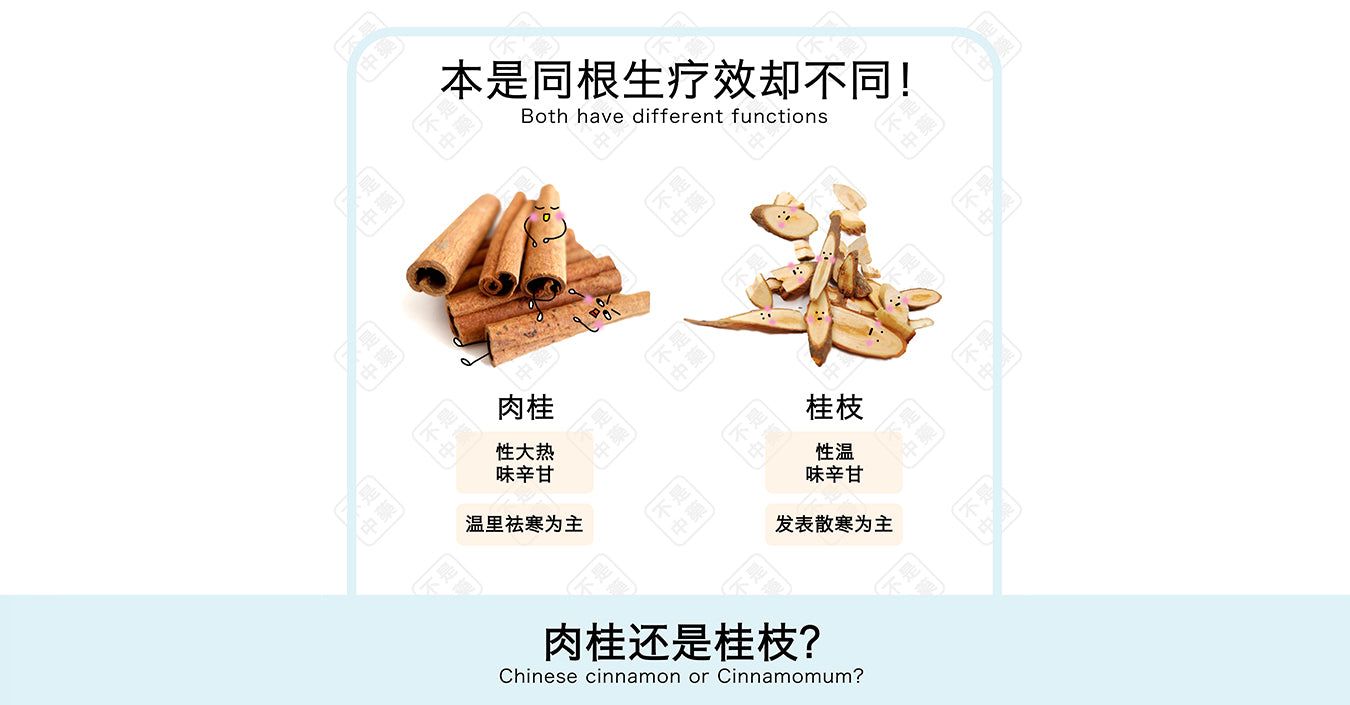Your Cart is Empty
🚛 FREE SHIPPING for order RM 120 & above
🚛 FREE SHIPPING for order RM 120 & above
🚛 FREE SHIPPING for order RM 120 & above
【不是中藥 itsherbs.com】Body Types
[不是中藥 itsherbs.com] Health Tips
【不是中藥 itsherbs.com】Media Reports • Announcement
【不是中藥 itsherbs.com】Body Types
8 major constitutions of traditional Chinese medicine
[不是中藥 itsherbs.com] Health Tips
Chinese Medicine // Wellness // Knowledge
【不是中藥 itsherbs.com】Media Reports • Announcement
Media Coverage • Announcements
2 min read

// 本是同根生疗效却不同 //
✅Similarities: Both have pungent and sweet tastes, and enter the Heart, Spleen, Liver, and Kidney meridians. Both can dispel cold and relieve pain, warm and unblock the meridians, and can treat internal cold syndromes such as cold-induced blood stasis and wind-cold-damp bi syndrome. They can also assist the yang qi of the Heart, Kidney, and Spleen, and are commonly used for yang deficiency syndromes of these three organs.
❎Differences: Cinnamon is pungent, sweet, and very hot, excels at warming internal cold, and is commonly used to treat internal cold syndromes; it can also tonify fire and assist yang, guiding fire back to its source. Compared to cinnamon, cassia twig is less pungent and warm, enters the lung meridian, opens the pores to induce sweating, warms yang at the defensive level, and promotes the circulation of nutritive blood at the muscle surface. Therefore, it is better at dispersing exterior cold and is used for wind-cold exterior syndromes and pain in the upper limbs, shoulders, and arms; it also helps yang transform qi and promotes urination to reduce swelling.
In summary, cinnamon and cassia twig both come from the cinnamon tree; cinnamon is the bark of the tree, while cassia twig is the tender branch. Both have the effect of warming the nutritive blood, aiding qi transformation, and dispersing cold congealing. However, cinnamon excels at warming the interior to relieve pain, enters the lower burner to tonify kidney yang, and returns to the life gate fire; cassia twig excels at releasing the exterior to disperse cold, invigorating qi and blood, mainly ascending to assist yang in transforming qi, and warming and unblocking the meridians.
